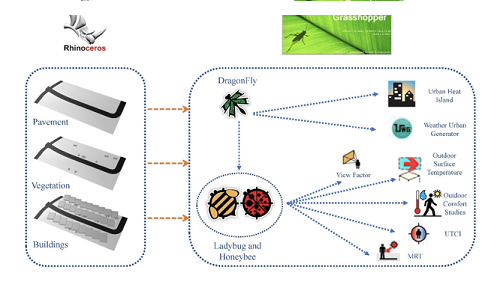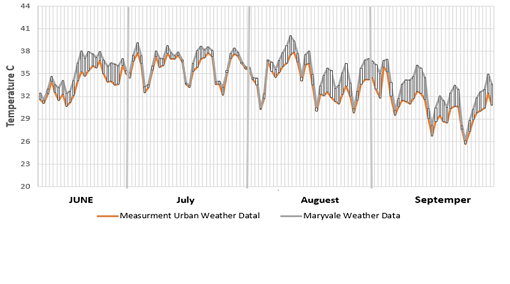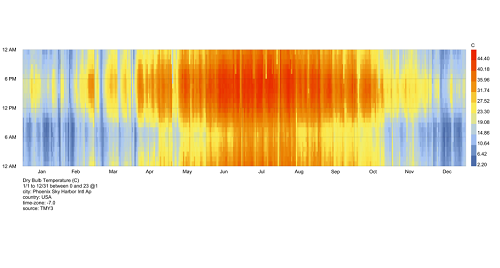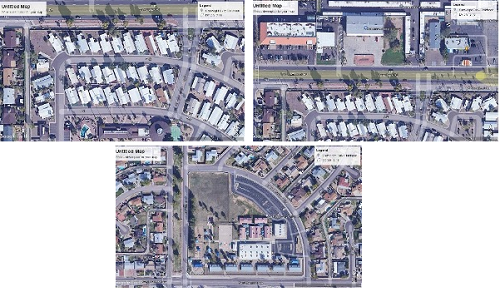Modeling the Effect of Cool Pavements on Urban Heat Island
Contact: Hasan Ozer ([email protected])
Researchers: Hasna Elmagri ([email protected]) and Tarek Kamel ([email protected])
Timeline: June 2022 – present
Urban Heat Island Phenomenon and Mitigation Measures
Pavements and roofs play an essential role in shaping the urban microclimate, affecting energy balance, and contributing to the so-called Urban Heat Island (UHI) effect. UHIs phenomenon appears to be one of the main contributing causes for the increase in Building Energy Demand (BED) and adverse health conditions.
In various studies, commonly claimed mitigation techniques, such as “cool” roofs and pavements and extra green space, have shown to provide positive environmental benefits. While cool pavements remain cooler than their conventional change alternatives, they were shown to change the environment’s energy balance by reflecting more solar energy due to their reflective surface properties.
Main goal of this research is to quantify the benefits and tradeoffs of cool pavement technologies used in urban areas using validated computational models.
Predicting Temperature and Thermal Comfort using Simulations in Phoenix Neighborhoods
Phoenix’s Maryvale neighborhoods with 248,140 residents were used to study the cool pavement impacts. City of Phoenix recently installed cool pavements in this neighborhood and completed a comprehensive study of thermal measurements.
Simulation Methods
Grasshopper is a comprehensive parametric simulation software tool that works in conjunction with Rhinoceros to deliver a powerful and efficient new development process. The Grasshopper working flow is an algorithmic sequence procedure that can assess various environmental studies concerning the indoor and outdoor spaces.
The Dragonfly plugin is used to quantify environmental parameters on an urban scale that can incorporate city morphology including characteristics such as building typology, height, predicted energy consumption, terrain albedo, vegetation percentage, building finishing materials.
Mean radiant temperature (MRT) between cool pavement surfacing technology and conventional asphalt pavement surface are compared to simulate the impact of various albedo values. Outdoor thermal comfort benefits are evaluated using the Universal Thermal Climate Index (UTCI).
Benefits and Tradeoffs of Cool Pavements
The surface temperature of cool pavement was 10-16°C lower than conventional asphalt concrete in the afternoons while mean radiant temperature was higher during midday. Albedo effect on the MRT and UTCI was also evident throughout the different simulated times.

Figure 1

Figure 2

Figure 3

Figure 4 : A print screens for the three zones using google earth pro.